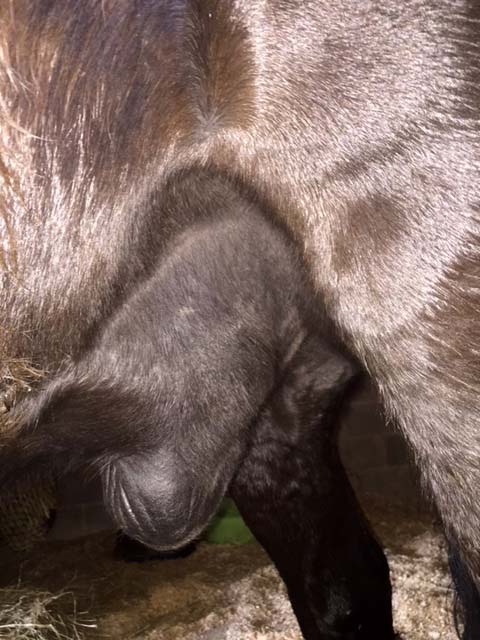Equine Metabolic Syndrome (EMS)
Owners and veterinarians have long recognized a syndrome among young adult horses relating to obesity and chronic laminitis. Terms like Pre-Cushing's, Cushingoid, Syndrome-X, Hypothyroid, and Metabolic Syndrome have been used to describe these animals. Mostly young adults, these horses do not respond well to mainstream Pituitary Pars Intermedia Dysfunction (PPID)/Cushing's Disease therapy using conventional drug therapy such as pergolide or cyproheptadine, and have only minimal success with thyroid drug supplementation. This is because they do not have PPID or true hypothyroidism.
In the past 21 years, researchers have examined this condition more closely and the more specific term Equine Metabolic Syndrome (EMS), is now used to describe this metabolic body type. High blood insulin - hyperinsulinemia - is characteristic, usually in association with insulin resistance. The EMS horse is carbohydrate intolerant and the degree of hyperinsulinemia can be assessed and measured as part of the diagnosis and recovery process.
EMS IS NOT A DISEASE

Insulin Resistance can arise in response to other disorders, diseases or challenges, but in non-PPID horses the vast majority of hyperinsulinemic horses are not "diseased". Carbohydrate intolerance is simply part of their metabolism, likely genetic. If you knew someone with an allergy to peanuts, strawberries, or shrimp, you wouldn't really consider them to be diseased. Try to think of the hyperinsulinemic horse or pony as an animal that is intolerant of certain types of diet and management. This is a management and care issue with no real cure. The solution is to avoid the triggers that can get the horse into trouble.
LOW CARBOHYDRATES
The primary treatment for equines with EMS only, and for equines with both PPID and IR, is a low-carb, low-fat, and mineral-balanced diet. Any grain products and pasture turnout should be eliminated until all signs of EMS are totally absent and reintroduced only with extreme caution. Low-carbohydrate hay or forage products should be fed. The ECIR Group has found that hydrolyzable carbohydrates (HC)* — Ethanol Soluble Carbohydrates (ESC) plus starch — at 10% or less by testing, or hay soaked and drained to remove soluble sugars, can be fed safely to all but the most severely affected individuals.
Attempting to achieve weight loss by reducing feed intake below 1.5% of body weight can worsen IR and precipitate Hyperlipemia. Hyperlipemia is an alteration in fat metabolism resulting in elevated triglycerides and cholesterol and is a potentially life-threatening condition, especially in ponies. DO NOT STARVE the weight off your horse or pony! Severe calorie restriction actually triggers Insulin Resistance.
SIGNS OF EMS AND INSULIN RESISTANCE IN PPID

- Abnormal fat deposits such as a cresty neck or lumpy fat patches that persist even if the horse loses weight; fatty sheath or udder.
- History of laminitis commonly induced by grass.
- Puffiness in the hollows above the eyes.
- Advanced symptoms include increased thirst and urination, loss of body condition and muscle wasting and low energy levels.
- Above normal insulin with normal blood glucose.
- Advanced cases, or horses on an inappropriate diet, may also have high glucose.
*Hydrolyzable carbohydrates (HC) are defined as those digestible in the small intestine and the only components that increase blood glucose and, therefore, insulin. This includes starch and ESC. ESC = Ethanol Soluble Carbohydrates, i.e., carbohydrates extracted in ethanol which primarily includes monosaccharides and disaccharides.
See Hydrolyzable Carbohydrates and the Metabolic Horse
For more information about successful diagnosis and treatment please see:
Information Contained On This Page Adapted From
Equine Cushing's & Insulin Resistance Course
Offered by Eleanor M. Kellon, VMD www.drkellon.com

